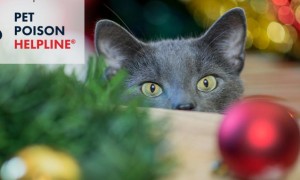Nausea in Cats: Understanding Causes and Treatments
Nausea in cats is a condition that can disrupt their health and well-being. As pet owners, it’s essential to recognize the signs of nausea, understand its potential causes, and know how to manage this uncomfortable affliction in our feline friends. In this article, we will delve into the symptoms, causes, and treatment options available for nausea in cats.
Signs of Nausea in Cats
Cats are notoriously good at hiding their discomfort, which makes it challenging for owners to notice when something is wrong. However, several signs can indicate that your cat is experiencing nausea. These include:
- Loss of Appetite: A cat that is feeling nauseous may refuse to eat or show a marked decrease in their regular food intake.
- Excessive Salivation: You might notice saliva pooling in the mouth or long stringy drool when your cat is nauseous.
- Retching or Vomiting: While not all cats will vomit when they’re nauseous, some may retch or bring up undigested food.
- Lethargy: Cats may appear more tired than usual and show less interest in play or interaction.
- Hiding or Withdrawal: A nauseous cat may seek solitude, retreating to quiet or hidden spots in the house.
- Changes in Behavior: If your normally social and playful cat suddenly becomes withdrawn or irritable, it may be a sign of illness, including nausea.
If you suspect that your cat is experiencing nausea, it’s crucial to monitor their symptoms and consult your veterinarian for guidance.
Common Causes of Nausea in Cats
Understanding the root causes of nausea is essential for effective treatment. There are several potential reasons why your cat may be feeling nauseous, including:
-
Dietary Issues: Abrupt changes in diet, spoiled food, or dietary intolerances can lead to stomach upset and nausea. Cats are creatures of habit, and sudden changes in their food can create gastrointestinal distress.
-
Hairballs: Cats groom themselves frequently, so they can ingest hair that may form hairballs in their digestive tract, leading to nausea and vomiting.
-
Infections or Illnesses: Viral or bacterial infections can cause nausea as a secondary symptom. Conditions like feline panleukopenia or upper respiratory infections can disrupt your cat’s normal digestive processes.
-
Organ Disease: Certain diseases affecting the liver, kidneys, or pancreas can lead to nausea. Cats with chronic kidney disease or pancreatitis commonly exhibit symptoms of nausea.
-
Medications: Some medications have gastrointestinal side effects that can lead to nausea. If your cat is on medication, consult your vet to see if it could be a contributing factor.
-
Toxins: Exposure to toxic substances, like certain plants, chemicals, or human foods (onions, garlic, chocolate), can cause nausea and other severe symptoms.
-
Motion Sickness: Cats can experience travel sickness, especially if they are not accustomed to being in a car or carrier. This can induce feelings of nausea during travel.
Diagnosis and Treatment
If you suspect your cat has nausea, the first step is to make an appointment with your veterinarian. They will perform a thorough examination, possibly accompanied by diagnostic tests such as blood work or imaging, to determine the underlying cause of the nausea.
Treatment Options
The treatment for nausea in cats will largely depend on the diagnosis. Here are some common approaches:
-
Dietary Management: If dietary issues are the cause, your veterinarian may recommend a bland diet for a short period or gradual re-introduction of regular food.
-
Medications: In cases of persistent nausea, your vet might prescribe anti-nausea medications such as Metoclopramide or Maropitant (Cerenia) to help relieve symptoms.
-
Fluid Therapy: If your cat is dehydrated due to vomiting or not eating, your vet may administer fluids to restore hydration.
-
Treating Underlying Conditions: If a more serious illness is discovered, such as kidney disease or infections, appropriate treatment will be initiated for those conditions.
-
Supportive Care: Offering a warm, quiet space for your cat to rest can help them feel more comfortable as their condition resolves.
Preventing Nausea in Cats
While it may not be possible to prevent nausea entirely, there are steps you can take to reduce its occurrence:
- Gradual Diet Changes: Always introduce new foods slowly to avoid gastrointestinal disturbances.
- Regular Grooming: Help reduce hairballs through regular grooming, especially for long-haired breeds.
- Safe Environment: Keep potentially harmful plants and substances safely out of reach.
- Routine Veterinary Checkups: Regular vet visits can help catch underlying health issues early.
Conclusion
Nausea in cats is a common yet concerning condition that can signal underlying health issues. As responsible pet owners, being vigilant for signs of nausea and seeking veterinary advice promptly is crucial for our cats’ health. With proper diagnosis and treatment, most cats can recover without significant complications. Always consult your veterinarian when you notice changes in your cat’s behavior or health, and consider taking preventive measures to keep nausea at bay. Your feline friend deserves the best care you can provide.






